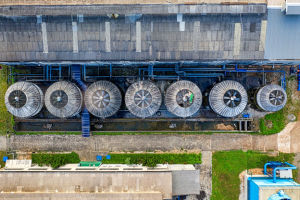The treatment of wastewater is an essential procedure for preserving environmental sustainability and public health. While the underlying principles of wastewater treatment are similar, there are significant differences between residential and commercial systems. Understanding these differences is essential for ensuring that each type of system operates efficiently and meets relevant regulatory standards.
Scale and Volume of Wastewater
The scale and volume of wastewater generated by residential and commercial sources significantly differ. Residential wastewater primarily comes from households, which includes water from sinks, showers, washing machines, and toilets. The volume of residential wastewater tends to be relatively consistent, with slight variations based on household size, water usage habits, and seasonal changes. Having quality wastewater solutions can help reduce the amount of usable water getting wasted by households. In contrast, commercial wastewater comes from a wide range of sources such as restaurants, hospitals, and industrial facilities. The volume of wastewater generated by these sources can vary greatly depending on the type of business and its operations.
Type of Contaminants
The types of contaminants found in residential and commercial wastewater exhibit notable differences. Residential wastewater typically contains organic matter, including human waste, food particles, and household chemicals such as detergents and soaps. These contaminants are generally consistent and predictable, allowing for standardized treatment approaches. On the other hand, commercial wastewater can contain a more complex and diverse range of contaminants. For example, wastewater from restaurants often contains high levels of grease and oil, while wastewater from hospitals may contain pharmaceuticals and other medical substances. Industrial facilities can produce wastewater loaded with heavy metals, toxic chemicals, and other hazardous materials. Therefore, commercial wastewater treatment systems need to be specially designed to address specific contaminants based on the nature of the business and its waste production.
Treatment Processes
The treatment processes for residential and commercial wastewater also differ due to the variations in volume and contaminants. Residential wastewater treatment typically follows a straightforward and standardized approach. The process begins with primary treatment, where large solids are filtered out through screening and sedimentation. Next, secondary treatment involves biological processes like activated sludge or trickling filters to break down organic matter. Finally, tertiary treatment may be employed to remove any remaining nutrients and contaminants, resulting in effluent that meets regulatory discharge standards.
In contrast, commercial wastewater treatment processes are often more complex and tailored to the specific needs of the business. Primary treatment might include advanced screening techniques to handle bulkier waste materials. Secondary treatment for commercial systems may involve sophisticated biological or chemical processes designed to tackle higher contaminant loads, such as anaerobic digestion for high-strength waste from food processing plants.
Regulatory Requirements
Regulatory requirements for wastewater treatment vary considerably between residential and commercial systems. Residential wastewater treatment systems primarily follow municipal, state, or provincial regulations aimed at ensuring that effluents discharged into the environment do not harm public health or ecosystems. These regulations typically focus on controlling the levels of specific contaminants such as biochemical oxygen demand (BOD), total suspended solids (TSS), and pathogens in the treated water. Compliance is usually monitored through periodic testing and reporting by local environmental agencies.
Commercial wastewater treatment systems, however, must meet more stringent and diverse regulatory standards due to the potential presence of hazardous and complex contaminants. These regulations can include not only local and state rules but also federal guidelines enforced by bodies such as the Environmental Protection Agency (EPA) in the United States. Businesses may be required to obtain special permits based on the type and quantity of contaminants they discharge.

While residential and commercial wastewater treatment share similar goals, the scale, volume, contaminants, treatment processes, and regulatory requirements between these systems differ significantly. Understanding these differences is essential for ensuring that each type of system operates efficiently and meets relevant standards to protect public health and the environment. So whether it’s a small household or a large industrial facility, proper wastewater treatment is crucial for sustaining a clean and healthy world for everyone.

